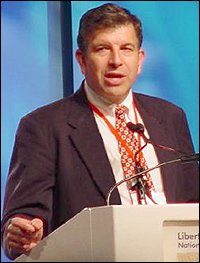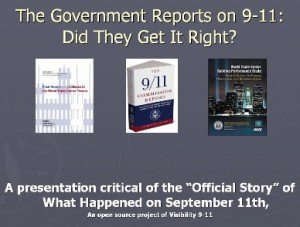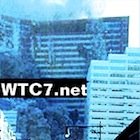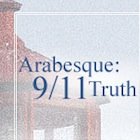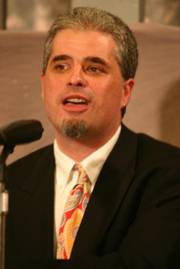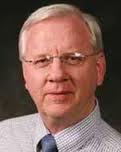In 2008, Harvard professors Cass Sunstein and Adrian Vermeule proposed that the government should engage in “cognitive infiltration” of citizen groups that seek the truth about 9/11. The proposal was that government operatives, whether anonymous or otherwise, should infiltrate and disrupt the groups. They wrote, “Government agents (and their allies) might enter chat rooms, online social networks, or even real-space groups and attempt to undermine percolating conspiracy theories by raising doubts about their factual premises, causal logic or implications for political action. “
The following year, this anti-Constitutional stance was rewarded when Sunstein was made director of the White House Office of Information and Regulatory Affairs. Members of the 9/11 Truth Movement responded with detailed criticism.
Of course, the idea of infiltrating a grassroots action group, to disrupt and defame its members, was not new. The FBI program called COINTELPRO was a widely reported example after it was revealed in the early 1970s to have infiltrated citizen groups seeking civil rights and peace. After being revealed, COINTELPRO techniques continued at the FBI and elsewhere in government.
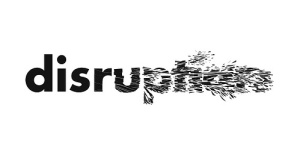 Since 9/11, journalists have noted that government infiltration of political groups is no longer a rare exception but is the norm. The goals of such infiltration are to destabilize and prevent citizen dissent by creating a negative public image for the target group and conflict within the group. Infiltration is easy when it comes to a grassroots movement like 9/11 Truth. That is, you cannot just claim to be a 9/11 Commission member or an employee of a government agency but anyone can say they are a truth seeker. The beauty of this for government operatives is that they can control both sides of the conversation.
Since 9/11, journalists have noted that government infiltration of political groups is no longer a rare exception but is the norm. The goals of such infiltration are to destabilize and prevent citizen dissent by creating a negative public image for the target group and conflict within the group. Infiltration is easy when it comes to a grassroots movement like 9/11 Truth. That is, you cannot just claim to be a 9/11 Commission member or an employee of a government agency but anyone can say they are a truth seeker. The beauty of this for government operatives is that they can control both sides of the conversation.
To make a significant impact, however, an infiltrator needs to quickly move into a position as a leading voice for the movement. One way in which this was done, even before Sunstein’s proposal, was through a social variant of the physical principle called the “gravitational assist.” The physical principle leverages the movement and gravitational pull of a moon or planet to slingshot a spacecraft into a higher velocity trajectory by moving the path of the spacecraft near the larger body. The social variant is when a brief association with a leading voice in a group lends someone credibility that they would otherwise not have.
Examples of the gravitational assist occurred when physicist Steven Jones made news in September 2005 for challenging the official account of the World Trade Center destruction. People wanted their photo taken with him and he was invited to speak at many events. Soon afterward, Jim Fetzer, previously unknown to 9/11 investigators, dramatically announced that he and Jones were starting a new “scholars” group to challenge the official account of 9/11. That association led to Fetzer discrediting Jones and others through association with absurd concepts like Star Wars beams and holograms at the WTC.
It was later learned that Fetzer was an expert on the use of disinformation yet he and his colleagues Morgan Reynolds and Judy Woods went on to link 9/11 questioning with many preposterous ideas. They created nonsensical hypotheses and promoted them through mass emails targeting media representatives and others in order to present the 9/11 Truth Movement as a ludicrous spectacle.
When recently asked to help reveal more of what happened during that time, it occurred to me that people could benefit from learning the general techniques used to disrupt grassroots movements. Examined more closely, the techniques used by infiltrators or disruptors can be seen as expressions of commonly known rules of debate. Specifically, the rules are reflected in philosopher Arthur Schopenhauer’s sarcastic publication, The Art of Being Right: 38 Ways to Win an Argument. Here are a few examples of how these techniques were used to disrupt 9/11 questioning.
“The Extension” takes a proposal beyond its intended limits so that the extended proposal can be refuted and thereby make the original statement sound weaker. A 9/11 example took the question about whether an aircraft had actually hit the Pentagon and extended it to all other aspects of 9/11. Therefore if there was no plane at the Pentagon then there were no planes at all, and no alleged hijackers, and so on.
“The Homonymy” is a misuse of a proposition through use of similar words. The government agency NIST utilized this method effectively by replacing words in its reports with weaker homonyms, making it easier for the unprecedented destruction of the WTC to sound more plausible. Therefore fireproofing became “insulation” and joists became “trusses.”
Using the “Postulate What Has to Be Proved” rule, 9/11 disruptors presented and then destroyed their own straw man arguments. That is, they first framed the questions in simplified, diverting ways and then refuted those “straw man” frames. This was the go to technique of the “debunkers” at Popular Mechanics.
The method of “Make Your Opponent Angry” was frequently used. Through the years, infiltrators often resorted to baseless accusations, threats, and absurd insinuations. Luckily, this could be easily spotted.
In the “Agree to Reject the Counter-Proposition” technique, the disruptor frames the issue as two very distinct options. This is the “split screen” method that FOX News used so well over may years to move national discussions toward extreme views. With 9/11, it was again most well demonstrated by arguments over the Pentagon in which everyone was either a “planer” or a “no-planer.” All other questioning about the Pentagon event was forsaken as a result of this mindless dichotomy.
Using “Arguments Ad Hominem,” Schopenhauer described how the opponent could be shown to be inconsistent and therefore untrustworthy. With 9/11 questioning, disruptors often attacked the person (ad hominem) rather than the argument itself.
Fetzer helped the government deflect questions by using the “Make Him Exaggerate His Statement” technique in which “when you refute this exaggerated form of it, you look as though you had also refuted his original statement.” In the short time that he was in the 9/11 limelight, Fetzer would begin every interview with the claim that my former company UL had “certified the steel used in the World Trade center to 2000 degrees for six hours.” Despite being an incorrect exaggeration, Fetzer continued to use it even after that fact was made clear to him. Ultimately this allowed the government agency NIST to refute Fetzer’s exaggerated claim, quoting it word for word, rather than address true questions about UL’s certification of the WTC steel components.
In the “Find One Instance to the Contrary” method, the disruptor simply finds one example of when a proposition was not met. For example, a disruptor would argue that because the WTC towers were destroyed from the top down, they could not be demolitions because all demolitions occur from the bottom up. This was the argument from “skeptic” Michael Shermer when I debated him on Air America radio in 2007. In order to support his contention, Shermer casually claimed to have watched thousands of demolition videos during the 2-minute radio break. Unfortunately for him, a top-down demolition was posted on a leading 9/11 truth website which I referred to at the time.
With the “Put His Thesis into Some Odious Category” technique, 9/11 questioning was frequently conflated with positions that were seen as hateful or stupid. This led to some members of the media lumping “truthers” in with “birthers,” holocaust deniers, and those who question the moon landings.
In retrospect, it is comforting to know that so much effort at disruption was needed to prevent 9/11 questions from taking over the national discussion. It means that many people were informed to some degree and that citizen groups working for the truth were seen as a threat to a corrupt system. Many people are now aware that terrorism events are not as simple as the government and mainstream media portray them.
People need to be able to recognize infiltration of grassroots movements because the system will not change on its own. It’s likely that only a catastrophic and catalyzing realization on the part of a large segment of society will lead to any real change and recognizing the techniques of disruption could help achieve that realization.
